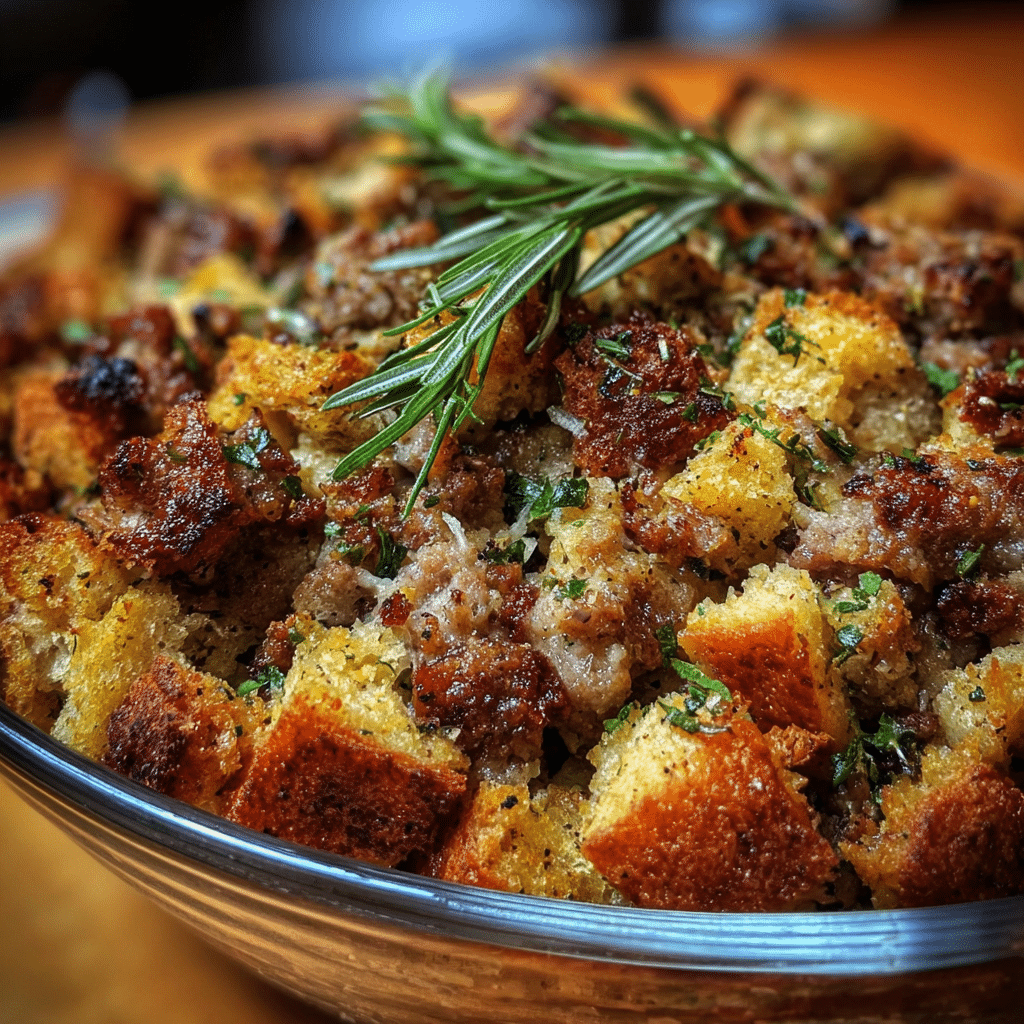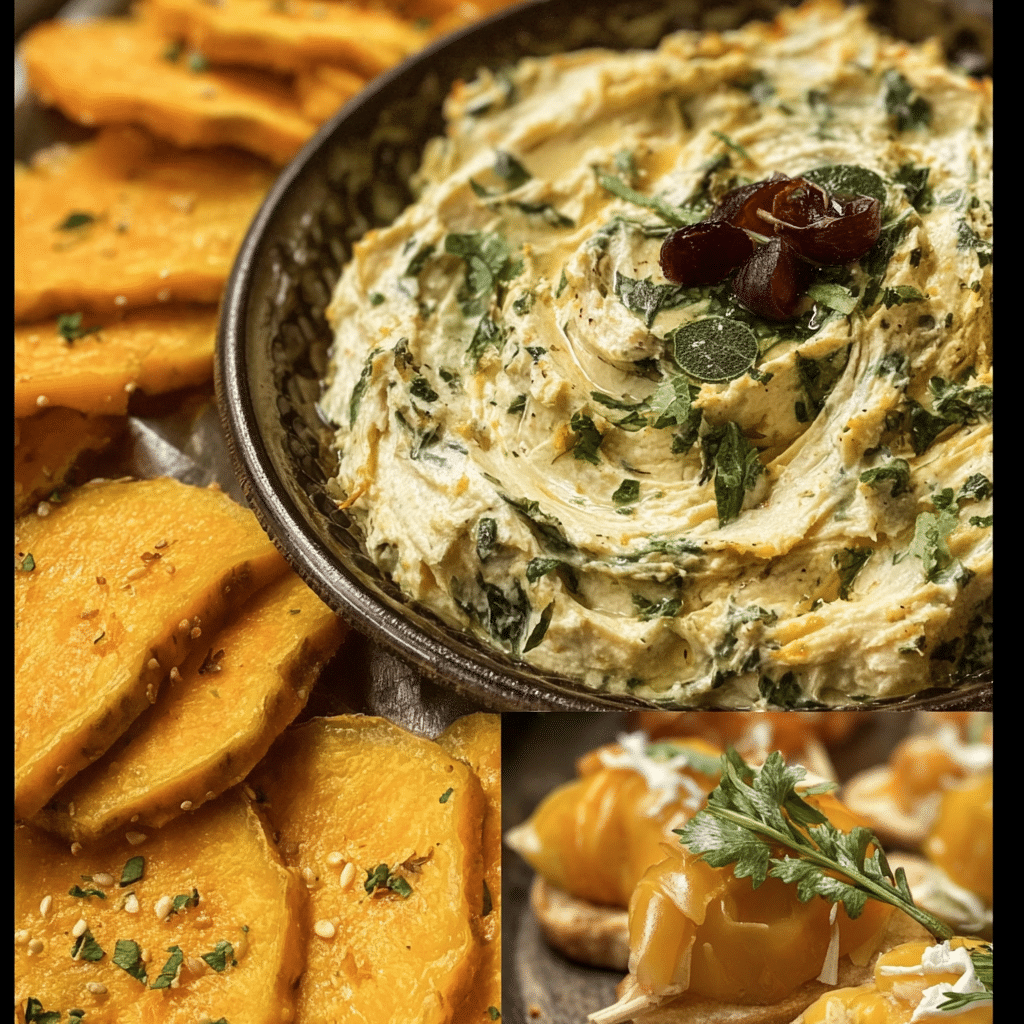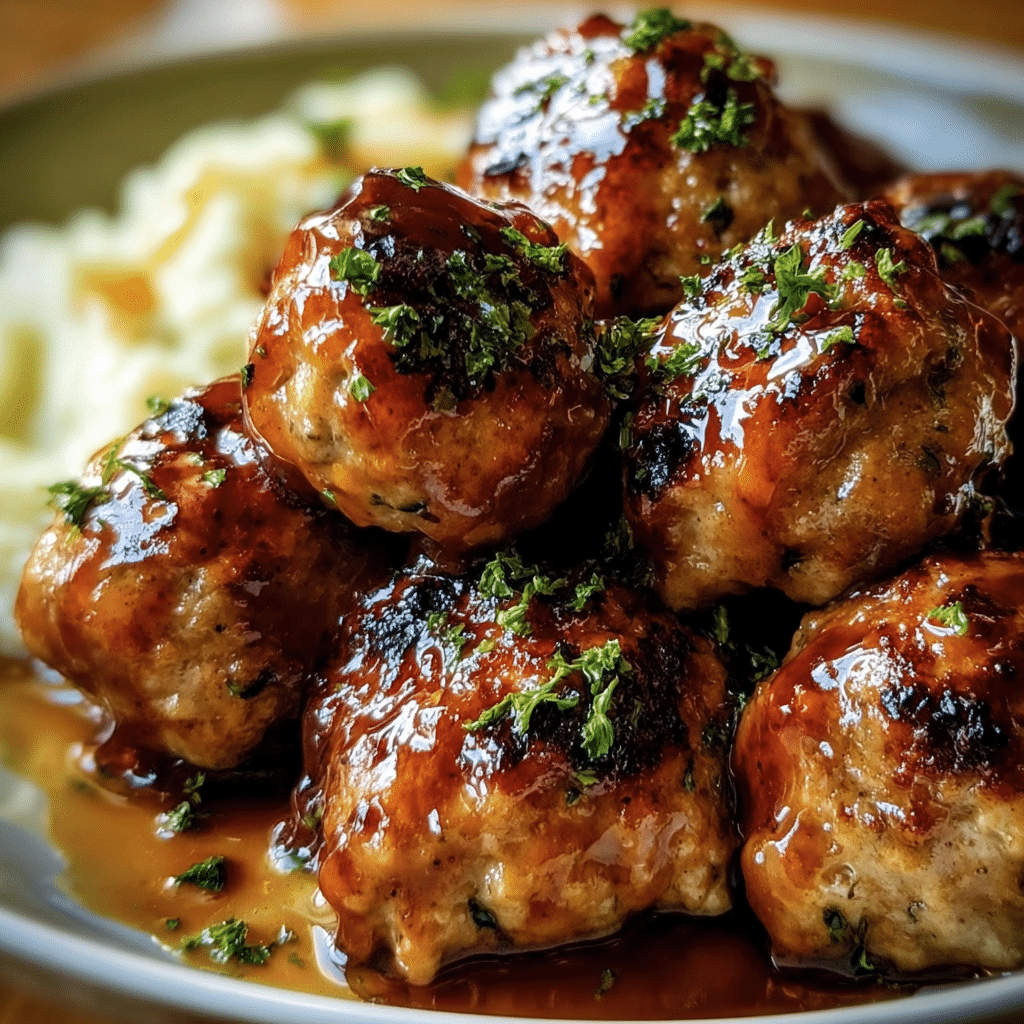Crispy butternut squash has a magical quality that can transform a simple meal into a delightful experience. I vividly remember the first time I encountered this dish. It was a chilly autumn evening, and my sister and I were in the kitchen, trying to recreate a recipe we had seen on a popular cooking show. As we peeled and diced the squash, we giggled about our culinary inexperience, yet the aroma that filled the kitchen was nothing short of heavenly. The oven timer buzzed, and when we pulled out the tray, the golden-brown cubes of crispy butternut squash glistened with a hint of olive oil and sprinkled sea salt. It was love at first bite—crunchy on the outside and tender on the inside, it was a revelation that would stick with me for years.
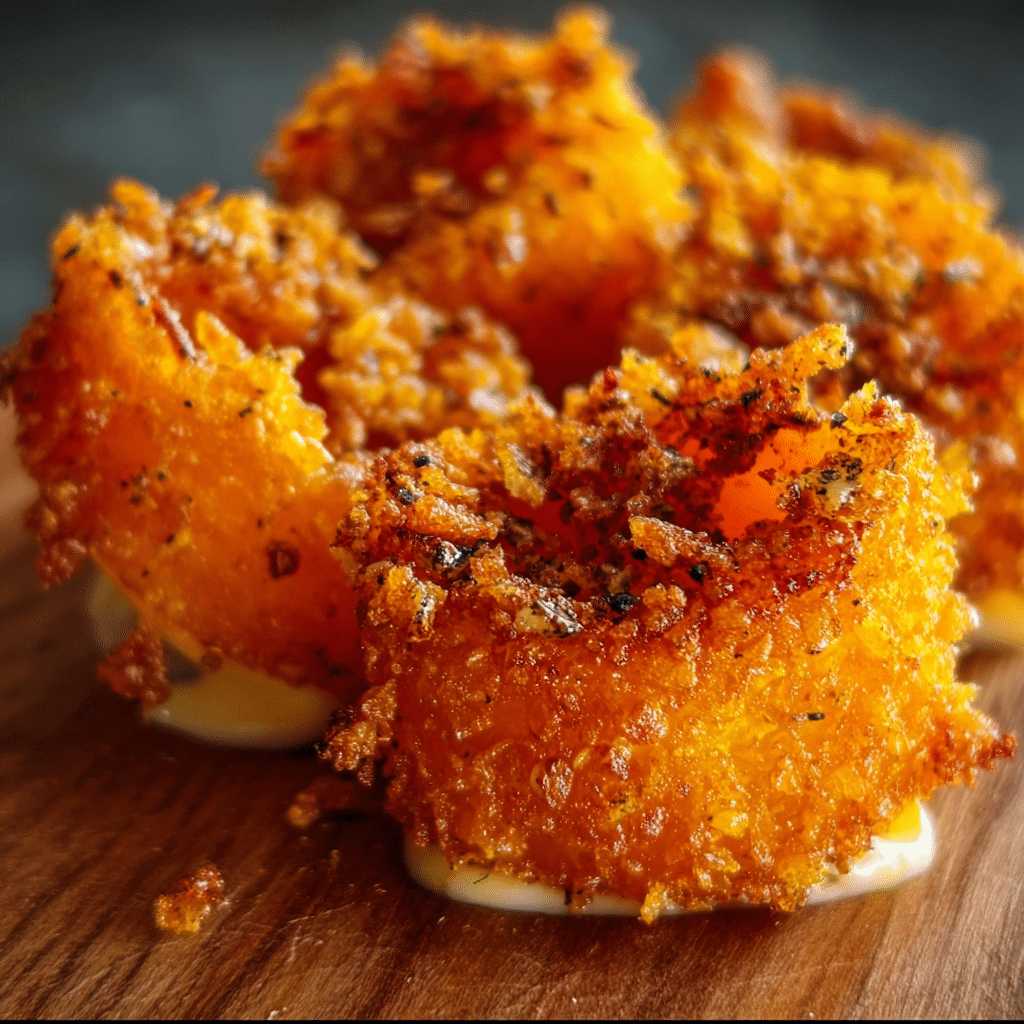
The story of crispy butternut squash goes beyond my kitchen adventures; it has roots that intertwine with many cultures. Butternut squash is a variety of winter squash that originated in the Americas, and it has been cherished by indigenous peoples for centuries. Its creamy flesh and sweet flavor make it a versatile ingredient, perfect for a variety of dishes. In many cultures, squash signifies the harvest season, symbolizing abundance and nourishment. As I learned more about this humble vegetable, I discovered that it has been an essential part of many culinary traditions, from hearty soups in the fall to festive side dishes during Thanksgiving celebrations.
The Story Behind This Recipe
What makes my recipe for crispy butternut squash special is its simplicity and accessibility. Unlike many elaborate dishes that can leave you feeling overwhelmed, this recipe is perfect for busy families looking for quick dinner solutions. With just a few basic ingredients—squash, olive oil, salt, and pepper—you can whip up a dish that not only satisfies your hunger but also delights your taste buds. The crunchiness of the roasted squash is a textural joy that pairs beautifully with various proteins or can stand alone as a star on your dinner plate.
Seasonally, crispy butternut squash is an ideal dish for the cooler months of fall and winter when the squash is at its peak. It’s the kind of recipe that evokes warm memories and makes you feel cozy as the leaves change and the days grow shorter. I often find myself preparing it for Thanksgiving gatherings or even just as a weeknight side, bringing a sense of celebration and comfort to the table.
As I reflect on the emotional connection I have with crispy butternut squash, I think about the laughter, the shared meals, and the conversations that have taken place around it. Food has a way of bringing people together, and this dish is no exception. The vibrant orange color of the squash adds warmth to any plate, making it a feast for both the eyes and the palate. My hope is that as you explore this recipe, you will find your own connections and perhaps create new memories with your loved ones.
In this guide, you’ll learn everything from selecting the perfect butternut squash to the best cooking techniques to achieve that coveted crispiness. Whether you’re a seasoned chef or someone just starting your culinary journey, I promise there’s something here for everyone. So grab your apron, and let’s dive into the delicious world of crispy butternut squash!
The Rich History and Cultural Significance of crispy butternut squash
The rich history and cultural significance of crispy butternut squash are as diverse as the dishes it inspires. Understanding its origins provides a deeper appreciation for this delightful vegetable. Butternut squash itself belongs to the Cucurbita family, which includes a variety of squashes and pumpkins. Its origins trace back to the Americas, where indigenous communities cultivated it alongside corn and beans, forming the basis of what is known as the “Three Sisters” planting method. This ancient agricultural practice emphasizes the symbiotic relationships between these crops and has been a staple of Native American diets for centuries.
Origins and History
Historically, butternut squash was celebrated not just for its taste but also for its nutritional value. Indigenous tribes would roast it over open fires, using it in stews and as a filling for various dishes. When European settlers arrived in the Americas, they adopted the squash into their diets, incorporating it into soups and pies. By the time the 19th century rolled around, butternut squash became a popular ingredient in American cuisine, often featured in harvest festivals and Thanksgiving dinners. Its sweet, nutty flavor made it a favorite alongside turkey, and its vibrant color added a festive touch to the holiday table.
As food culture evolved, so did the ways in which butternut squash was prepared. The introduction of modern cooking techniques has led to the beloved dish we now know as crispy butternut squash. Roasting, in particular, has become the preferred method, as it allows the natural sugars in the squash to caramelize, creating that perfect crispy texture. Whether diced into cubes or cut into wedges, butternut squash transforms into an irresistible side dish that complements a wide array of meals.
Cultural Significance
Beyond its culinary uses, butternut squash holds cultural significance in various traditions. In many cultures, it is associated with autumn and harvest festivals. For example, in the United States, it is a staple during Thanksgiving, symbolizing gratitude and abundance. In other regions, such as in parts of Africa and Asia, squash is used in traditional dishes that celebrate community and togetherness. The act of cooking and sharing meals featuring butternut squash is a way to honor heritage and foster relationships.
Famous chefs and restaurants have embraced butternut squash in their culinary creations, elevating it from a simple side dish to a gourmet experience. Chefs like Thomas Keller and Alice Waters have featured it prominently in their menus, showcasing its versatility and ability to shine in both rustic and refined dishes. Whether served in a Michelin-star restaurant or at a family dinner table, crispy butternut squash has carved out a well-deserved place in the culinary world.
Nutritional Benefits
In addition to its delicious flavor and cultural significance, crispy butternut squash is packed with nutritional benefits. It is rich in vitamins A and C, both of which are essential for maintaining healthy skin and eyesight. The high fiber content aids digestion and contributes to overall gut health. Plus, butternut squash is low in calories, making it an excellent option for those looking to maintain a balanced diet without sacrificing flavor. It’s a powerhouse of nutrients that can fit seamlessly into various dietary needs, whether you’re vegan, gluten-free, or simply seeking to add more vegetables to your meals.
Overall, the history and cultural significance of crispy butternut squash reveal a rich tapestry of culinary traditions that span generations. From the indigenous peoples who first cultivated it to the modern-day chefs who continue to innovate with it, this humble vegetable has a story worth telling. As you prepare this dish, you are not just cooking; you are participating in a legacy that celebrates the joys of food, family, and community.
Essential Ingredients for Perfect crispy butternut squash
Essential Ingredients for Perfect Crispy Butternut Squash
When it comes to creating the ultimate crispy butternut squash, the importance of high-quality ingredients cannot be overstated. Each component plays a crucial role in enhancing flavor, texture, and nutritional value. My journey into developing this recipe began with a quest to find the perfect balance of ingredients that not only complement the natural sweetness of butternut squash but also provide that delightful crunch. Here’s a comprehensive breakdown of each ingredient that makes this dish shine:
Essential Ingredients
- 2 pounds butternut squash (peeled, seeded, and cut into 1-inch cubes)
- 2 tbsp olive oil
- 1 tsp kosher salt
- 6 cloves garlic
- 2 sprigs fresh rosemary
- 1 tsp parsley
Ingredient Breakdown
Butternut Squash: The star of this dish, butternut squash is known for its sweet, nutty flavor and creamy texture. When selecting butternut squash, look for ones that feel heavy for their size, have a smooth, firm skin, and are free from blemishes or soft spots. The best time to find butternut squash is in the fall and winter months when they are in season. They store well in a cool, dark place for several weeks, making them a budget-friendly choice during colder months.
Olive Oil: This ingredient not only adds flavor but also helps achieve that crispy texture we all crave. Extra virgin olive oil is the best choice due to its rich flavor and health benefits, including healthy fats and antioxidants. When shopping, look for a bottle that is dark glass to protect the oil from light, and check the harvest date on the label to ensure freshness. Olive oil is versatile and can be stored in a cool, dark place for up to a year.
Kosher Salt: Salt is essential for enhancing the natural flavors of the butternut squash. Kosher salt has a coarser grain, which makes it easy to sprinkle and control the seasoning. As a rule of thumb, use less table salt if you substitute, as its finer grains can lead to over-salting. Kosher salt is affordable and widely available in most grocery stores.
Garlic: Garlic adds depth and aromatic richness to the dish. Fresh garlic is preferred for its vibrant flavor; however, if you find yourself without fresh garlic, garlic powder can serve as a substitute in a pinch (though fresh is always best). When selecting garlic, look for bulbs that are firm and plump, avoiding any that feel soft or have green shoots. Fresh garlic can last several weeks when stored in a cool, dry place.
Fresh Rosemary: This fragrant herb elevates the dish with its earthy notes. Fresh rosemary is far superior to dried in terms of flavor and aroma. When buying, choose sprigs that are bright green and fragrant. Rosemary can be stored in the refrigerator wrapped in a damp paper towel or can be frozen for long-term use. If you don’t have fresh rosemary, thyme or sage can be delightful substitutes.
Parsley: Fresh parsley is used as a garnish to add a pop of color and a fresh finish to the dish. Flat-leaf parsley is generally preferred for cooking due to its robust flavor. When selecting parsley, choose vibrant green leaves without any wilting or browning. Store it in the fridge wrapped in a damp cloth or in a glass of water, like a bouquet, for maximum freshness.
Print
Crispy Butternut Squash
Ingredients
- 2 pounds butternut squash {peeled, seeded, and cut into 1-inch cubes}
- 2 tbsp olive oil
- 1 tsp kosher salt
- 6 cloves garlic {peeled}
- 2 sprigs fresh rosemary
- 1 tsp parsley {dried}
Instructions
-
Preheat oven to 435˚F and place a rack on the lowest setting.
-
Combine squash, olive oil, parsley, salt, and garlic cloves in a bowl. Toss to coat.2 pounds butternut squash,2 tbsp olive oil,1 tsp kosher salt,1 tsp parsley,6 cloves garlic
-
Add the butternut squash cubes onto a rimmed baking sheet and spread the veggies around to give them space. Add the rosemary sprigs.2 sprigs fresh rosemary
-
Bake for 15 minutes. Stir, and bake for another 8-12 minutes depending on your desired level of crisp.
Shopping Tips
When shopping for these ingredients, consider visiting local farmers’ markets for the freshest produce, especially during the fall and winter months. Not only do farmers’ markets typically have the best selection of seasonal produce, but you’ll also be supporting local agriculture. If you opt for grocery stores, look for organic options where possible, especially for the garlic and herbs, to avoid pesticide residues. Organic produce often has more intense flavors, which can elevate your crispy butternut squash to the next level.
Substitutions and Alternatives
If dietary restrictions are a concern, there are several substitutions you can consider. For those avoiding oil, you can use vegetable broth or apple cider vinegar for roasting the butternut squash. If you’re looking for a lower-sodium option, consider using a salt-free herb blend to season the dish. To make it vegan, rest assured that all the listed ingredients are plant-based, and you can always omit the garlic or rosemary if needed.
For storage, the butternut squash can be peeled and cut a day in advance and stored in an airtight container in the fridge. Garlic can be minced ahead of time but is best added fresh to retain its flavor. Fresh herbs can be chopped and stored in water in the refrigerator. Keeping these tips in mind will ensure your crispy butternut squash is not only delicious but also easy to prepare.
In conclusion, each ingredient plays a pivotal role in crafting the perfect crispy butternut squash. By selecting quality ingredients and understanding their roles, you can create a dish that is both satisfying and nutritious. So, gather your ingredients and prepare to embark on a culinary adventure that will not only fill your belly but also warm your heart.
Detailed Step-by-Step crispy butternut squash Cooking Instructions
Detailed Step-by-Step Crispy Butternut Squash Cooking Instructions
Creating the perfect crispy butternut squash requires a blend of technique, timing, and a little bit of love. Each step in the cooking process is essential to achieving that ideal golden-brown exterior while keeping the inside tender and flavorful. Here, I will guide you through a detailed step-by-step process that I’ve honed over countless kitchen experiments, ensuring that your crispy butternut squash turns out delicious every time.
Preparation Steps
- Gather Your Ingredients: Start by assembling all your ingredients in one place. This not only helps in making the cooking process smoother but also allows you to check that you have everything you need. You’ll need your butternut squash, olive oil, kosher salt, garlic, rosemary, and parsley.
- Prep the Butternut Squash: Peel the butternut squash using a vegetable peeler. Cut off the ends, then slice it in half lengthwise. Scoop out the seeds and stringy insides with a spoon. Finally, cut the squash into 1-inch cubes. The size is crucial for even cooking, so take your time to make uniform pieces.
- Chop the Garlic: Mince the garlic cloves finely. The smaller the pieces, the more flavor they will impart. You can use a chef’s knife for this, or if you have a garlic press, that works too. Just remember, fresh garlic is key to elevating the flavor of your crispy butternut squash.
- Prepare the Rosemary: Strip the rosemary leaves from the stems by running your fingers down the stem. Chop the leaves finely, as this will help release their aromatic oils, which will flavor the squash beautifully.
- Preheat Your Oven: Preheat your oven to 425°F (220°C). This temperature is perfect for roasting vegetables, allowing them to caramelize and become crispy without burning.
Cooking Process
- Mix Ingredients: In a large mixing bowl, combine the cubed butternut squash with olive oil, kosher salt, minced garlic, chopped rosemary, and a sprinkle of black pepper if desired. Toss everything together until the squash is evenly coated. This step is essential to ensure that every cube gets the proper flavor and crispiness.
- Arrange on a Baking Sheet: Spread the butternut squash mixture in a single layer on a large baking sheet lined with parchment paper. Make sure the cubes are not overcrowded; otherwise, they will steam instead of roast. If necessary, use two baking sheets.
- Roast the Squash: Place the baking sheet in the preheated oven. Roast for about 25-30 minutes, flipping the squash halfway through with a spatula. This will help achieve an even golden-brown color and crispiness on all sides. Keep an eye on them in the last few minutes, as oven temperatures can vary.
- Check for Doneness: The squash is done when it is fork-tender and has a crispy, caramelized exterior. You can use a fork or the tip of a knife to check the texture. If you prefer extra crispiness, you can leave them in the oven for an additional 5 minutes, but make sure they don’t burn.
- Garnish and Serve: Once roasted, remove the baking sheet from the oven. Sprinkle the crispy butternut squash with freshly chopped parsley for a pop of color and fresh flavor. Serve immediately as a side dish, on salads, or as a delicious snack!
Final Assembly
As you plate your crispy butternut squash, consider pairing it with complementary ingredients. A drizzle of balsamic reduction, a sprinkle of feta cheese, or a handful of toasted nuts can enhance the flavors and elevate the presentation. The beauty of this dish is its versatility; it can be served warm or at room temperature, allowing you to prepare it ahead of time for gatherings or meal prep.
Throughout this cooking process, remember that the secret to perfect crispy butternut squash lies in attention to detail. From selecting quality ingredients to mastering the roasting technique, each step contributes to the final dish. Take your time, enjoy the aromas, and savor the satisfaction of creating a dish that delights the senses.
In conclusion, making crispy butternut squash is not just about following a recipe; it’s about understanding the essence of cooking. With these detailed instructions, you’re equipped to create a dish that is not only visually appealing but also bursting with flavor. So gather your loved ones, and enjoy the delicious journey of preparing and sharing this wonderful dish together!
Professional Tips and Techniques for crispy butternut squash
When it comes to creating the perfect crispy butternut squash, there are a few professional tips and techniques that can elevate your dish from good to exceptional. Over the years, I’ve experimented with various methods, and I’m excited to share some insider secrets that I’ve discovered along the way. Whether you’re a novice in the kitchen or an experienced cook, these tips will help you achieve that delightful crunch and golden color that make crispy butternut squash so irresistible.
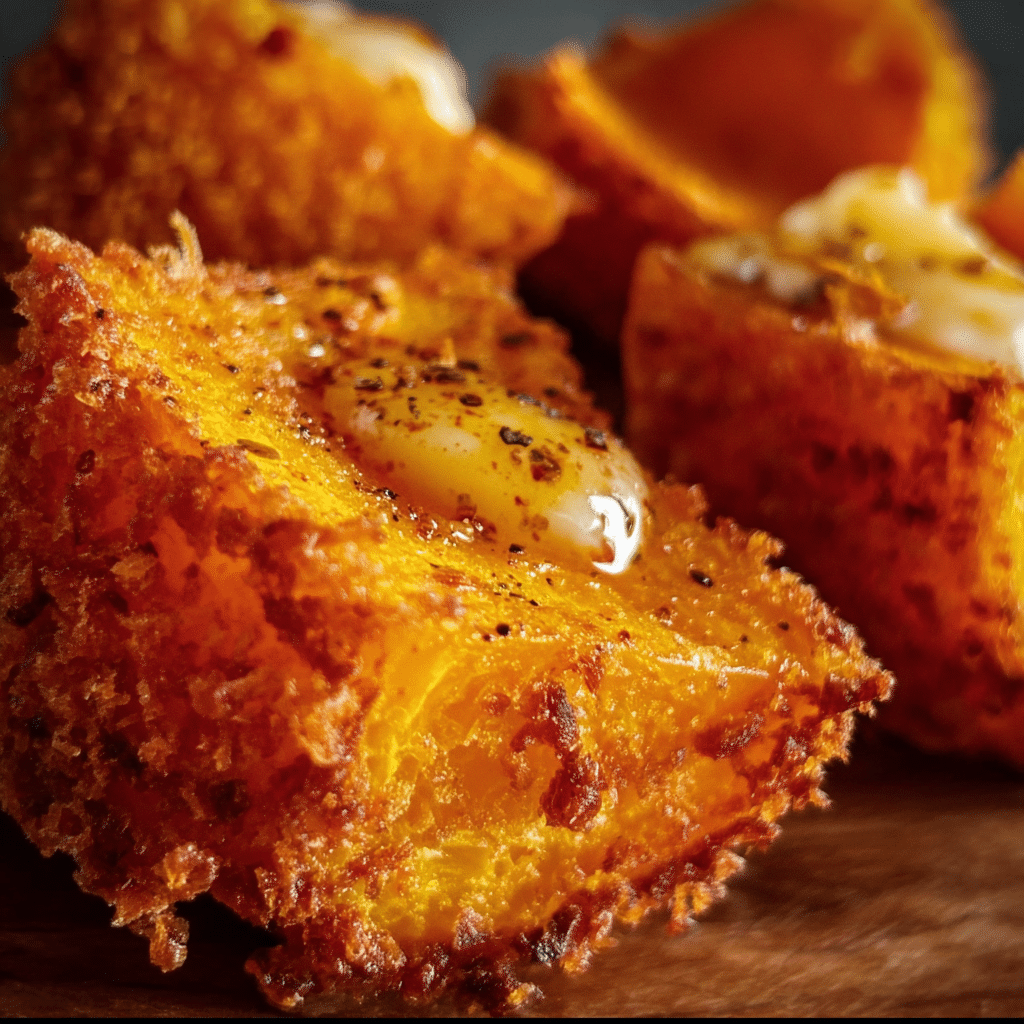
Professional Techniques
To start, let’s delve into the importance of choosing the right butternut squash. Look for squash that is firm, heavy for its size, and has a smooth, tan skin. Freshness plays a key role in the flavor and texture of your dish. When it comes to cutting, a sharp knife is your best friend. I recommend slicing the squash into uniform pieces – about 1-inch cubes are ideal. This ensures even cooking and crispiness.
Next, let’s talk about the secret to achieving that crispy texture. The trick lies in the cooking method. Roasting is my preferred technique as it allows for caramelization, enhancing the natural sweetness of the squash. Preheat your oven to a high temperature, around 425°F (220°C). High heat is essential for achieving that crispy exterior while keeping the interior tender. If you have a convection oven, using that setting can further enhance the crispiness, as the circulating air helps to cook the squash evenly.
Don’t forget the oil! A good quality oil, like olive or avocado oil, not only adds flavor but also helps to achieve the desired crispiness. Toss your cubed butternut squash with a generous amount of oil, ensuring every piece is coated. A common mistake is to skimp on the oil, which can lead to soggy results. Seasoning is equally important; salt, pepper, and your favorite spices should be added to enhance the flavor profile. I often add a sprinkle of paprika or garlic powder for an extra kick.
Troubleshooting Guide
Despite your best efforts, sometimes things don’t go as planned. If your crispy butternut squash isn’t turning out as expected, here are some troubleshooting tips. First, if the squash is turning out mushy, it could be due to overcrowding on your baking sheet. Make sure to spread the squash in a single layer, allowing space between each piece for proper airflow. If you have a lot of squash, consider using two baking sheets.
Another common issue is undercooking. If you find that the squash isn’t crispy after the usual cooking time, give it an additional 5-10 minutes in the oven, checking periodically for doneness. The goal is to achieve a golden-brown color and a fork-tender texture.
For those who want to take their crispy butternut squash to the next level, consider using a broiler at the end of the roasting process. Just a couple of minutes under the broiler can give your squash that final crispy touch. However, be vigilant; it can go from perfect to burnt in a flash!
Presentation Tips
Now that you’ve mastered the cooking techniques, let’s discuss how to present your crispy butternut squash. A vibrant dish is always more appealing, so consider garnishing with fresh herbs like parsley or thyme. A drizzle of balsamic glaze can add both flavor and a beautiful finish. Serving your crispy butternut squash in a rustic bowl or on a wooden board can create an inviting presentation that encourages sharing.
As for wine pairings, I recommend a light-bodied white wine, such as Sauvignon Blanc or a Chardonnay. The acidity in these wines complements the sweetness of the squash beautifully. If you prefer a non-alcoholic option, a sparkling apple cider can also be a refreshing choice.
Lastly, if you’re planning to serve the crispy butternut squash as part of a larger meal, consider the other dishes you’ll be serving. It pairs wonderfully with roasted meats or as a bed for grilled chicken, creating a colorful and nutritious plate. With these professional tips and techniques, you’re well on your way to creating the most delicious crispy butternut squash that will impress your family and friends.
Creative Variations and Adaptations of crispy butternut squash
While crispy butternut squash is delightful on its own, there are endless opportunities for creative variations and adaptations that can make this dish even more exciting. Whether you’re looking to switch things up with seasonal ingredients, accommodate dietary needs, or add a fusion twist, there’s a version of crispy butternut squash waiting to be discovered. Let’s explore some innovative ideas that will inspire your next kitchen adventure.
Seasonal Variations
One of the joys of cooking is embracing the seasons, and butternut squash shines brightly in the fall and winter months. However, you can also use seasonal ingredients to enhance your crispy butternut squash. For instance, in the fall, consider mixing in some diced apples or pears before roasting. Their natural sweetness complements the squash beautifully, adding a burst of flavor and texture. You can also sprinkle in some chopped walnuts or pecans for a delightful crunch.
As we move into winter, think about incorporating spices like nutmeg or cinnamon to warm up the dish. A dash of cayenne pepper can also add a nice kick, making it a perfect side for hearty winter meals. You can even toss in some Brussels sprouts or root vegetables like carrots and parsnips for a colorful roasted vegetable medley.
Dietary Adaptations
In today’s culinary landscape, accommodating different dietary preferences is essential. If you’re cooking for friends or family members with specific dietary needs, you’ll be pleased to know that crispy butternut squash can easily adapt. For a vegan option, simply ensure that any seasonings or toppings are plant-based. This dish is naturally gluten-free, making it a fantastic choice for those with gluten sensitivities.
If you’re looking to make it keto-friendly, consider using less sweet spices like smoked paprika or garlic powder instead of sugar-rich seasonings. You can also replace traditional oil with coconut oil for a different flavor profile that complements the squash beautifully. There’s no need to sacrifice flavor for dietary restrictions; with a little creativity, you can create a dish that everyone will love.
Creative Twists
For those who enjoy experimentation in the kitchen, there are countless creative twists to crispy butternut squash. One of my favorite methods is to create a spicy Asian-inspired version. Toss the cubed squash with sesame oil, soy sauce, and a hint of ginger before roasting. Once cooked, garnish with toasted sesame seeds and sliced green onions for a dish that’s bursting with flavor.
If you’re feeling adventurous, why not try a Mexican-inspired crispy butternut squash? Season the squash with chili powder, cumin, and lime juice before roasting. Serve it topped with fresh cilantro and crumbled queso fresco for a vibrant and zesty side dish. The possibilities are truly endless, and each variation gives you a chance to explore different flavor profiles and culinary traditions.
Another fun idea is to transform any leftovers into a delicious soup. Simply blend the roasted squash with vegetable or chicken broth, adding in some spices and cream for a creamy texture. This not only reduces waste but also gives you a comforting dish that’s perfect for chilly days.
In conclusion, the world of crispy butternut squash is bursting with potential. By utilizing seasonal ingredients, accommodating dietary needs, and introducing creative twists, you can elevate this humble vegetable into a star on your dining table. So, don’t hesitate to experiment and make this dish your own; after all, the kitchen is your canvas, and crispy butternut squash is the perfect medium for your culinary artistry.
Storage, Reheating, and Meal Prep for crispy butternut squash
When it comes to creating the perfect crispy butternut squash, knowing how to store, reheat, and meal prep is just as crucial as the cooking itself. If you’ve ever made a batch of these delicious, golden bites and found yourself with leftovers, you might be wondering how best to preserve their delightful crunch and flavor. Let’s dive into the world of storage and meal prep for crispy butternut squash, ensuring you maintain its divine taste and texture for future meals.
Short-term Storage
After you’ve prepared your crispy butternut squash, the first step is to let it cool down to room temperature. This is vital because placing hot food directly into containers can create condensation, leading to sogginess — something we want to avoid at all costs! Once cooled, transfer your butternut squash into an airtight container. I personally love using glass containers for their durability and easy cleaning. Make sure to layer the pieces in a single layer if possible, to prevent them from sticking together or becoming mushy.
In the refrigerator, your crispy butternut squash can last for about 3 to 5 days. If you’re planning to eat it within that time frame, simply store it in the fridge. I recommend placing a paper towel at the bottom of the container to absorb any excess moisture, which helps retain that coveted crispiness. Just be careful not to crowd the squash; if you do, the steam can make them lose their texture.
Freezing and Long-term Storage
If you find yourself with a larger batch of crispy butternut squash and want to store it for longer, freezing is an excellent option. However, freezing can alter the texture slightly, so it’s best to prepare the squash specifically for this purpose. Start by cutting the butternut squash into uniform cubes and roasting them as usual. Once they’ve cooled completely, spread them out on a baking sheet in a single layer and freeze them for about an hour. This process, known as flash freezing, prevents the pieces from clumping together.
After they’re frozen, transfer the butternut squash to a freezer-safe bag or container. Make sure to remove as much air as possible from the bag before sealing it to prevent freezer burn. Properly stored, crispy butternut squash can last in the freezer for up to 6 months. When you’re ready to enjoy them again, just pull out the desired amount and let them thaw in the refrigerator overnight before reheating.
Reheating Best Practices
When it comes to reheating your crispy butternut squash, the goal is to bring back that delightful crunch. The microwave might be the quickest method, but it can easily turn your crispy treasure into a soggy mess. Instead, I recommend reheating in the oven or air fryer. Preheat your oven to 400°F (200°C) and spread the squash out on a baking sheet. Bake for about 10 to 15 minutes or until heated through, flipping halfway to ensure even crisping. Alternatively, an air fryer can work wonders; just toss the squash in the air fryer basket and reheat at 375°F (190°C) for about 5 to 7 minutes.
For those who love meal prepping, crispy butternut squash can be a fantastic addition to various dishes. You can add them to salads, grain bowls, or even as a side dish to your main course. When prepping for the week, portion out your crispy butternut squash in individual containers, combining them with complementary ingredients like quinoa, black beans, or greens. This not only saves time but also ensures you have healthy, ready-to-eat meals at your fingertips.
Before we wrap up this section, let’s touch on some important food safety considerations. Always remember to store your butternut squash promptly after cooking, ideally within two hours. If you’ve left it out at room temperature for too long, it’s best to err on the side of caution and discard it. Additionally, if you notice any off smells or changes in texture after storage, it’s safer to throw them away rather than risk foodborne illness.
Finally, when it comes to portioning and packaging, consider using smaller containers or bags for single servings. This way, you can easily grab just what you need without having to reheat the entire batch, which can lead to a loss of quality over time. With these tips in mind, you’ll be well-equipped to enjoy your crispy butternut squash long after the initial cooking!
Nutritional Benefits and Health Information
When we think of crispy butternut squash, our minds may immediately wander to its sweet, nutty flavor and delightful crunch. But beyond its delicious taste, this vibrant vegetable is also packed with nutritional benefits that make it a fantastic addition to any meal. Let’s explore the nutritional profile, health benefits, and dietary considerations of crispy butternut squash, ensuring that you not only enjoy its flavor but also its health-boosting properties.
Nutritional Profile
A 1-cup serving of roasted butternut squash contains approximately 82 calories, making it a low-calorie option for those looking to maintain a balanced diet. It consists of about 22 grams of carbohydrates, 2 grams of protein, and less than 1 gram of fat. Butternut squash is an excellent source of dietary fiber, boasting about 6.6 grams per serving, which aids in digestion and helps keep you feeling full longer.
One of the most impressive aspects of crispy butternut squash is its vitamin content. It is particularly high in vitamin A, providing over 200% of the daily recommended intake per serving. This vitamin is essential for maintaining healthy vision, skin, and immune function. Butternut squash is also rich in vitamins C and E, both of which are powerful antioxidants that help protect your body from free radicals and support overall health.
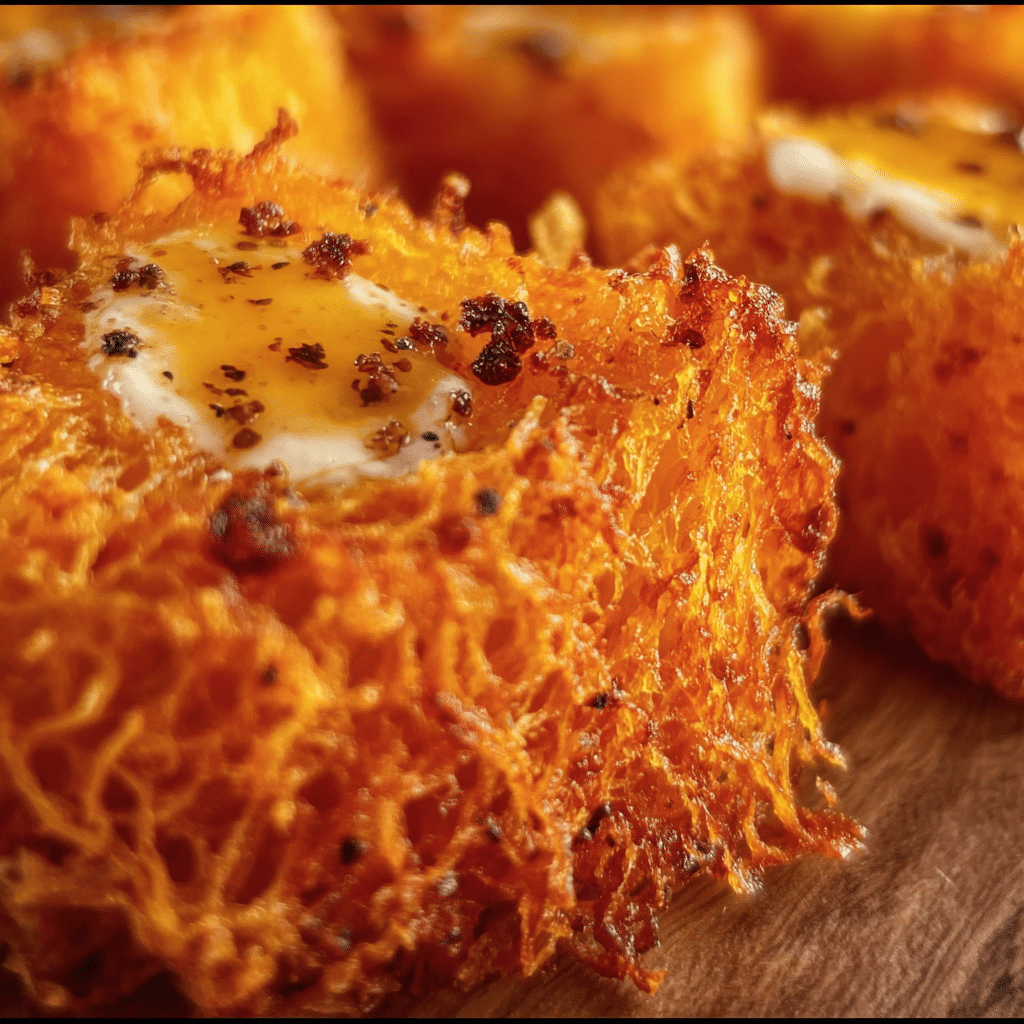
Health Benefits
Incorporating crispy butternut squash into your diet can offer several health benefits. Its high fiber content not only aids in digestion but also helps regulate blood sugar levels, making it a great choice for those with diabetes or anyone looking to maintain stable energy levels throughout the day. The antioxidants present in butternut squash, particularly beta-carotene, have been linked to a reduced risk of chronic diseases, such as heart disease and certain cancers.
Additionally, the potassium found in butternut squash can help regulate blood pressure, providing a heart-healthy boost. And let’s not forget about its anti-inflammatory properties, which can assist in reducing inflammation in the body, potentially leading to improved joint health and overall well-being. Whether you’re roasting it, pureeing it into soups, or tossing it into salads, the health benefits of butternut squash are undeniable.
Dietary Considerations
For those with dietary restrictions or looking to enhance their meals, crispy butternut squash is incredibly versatile. It’s naturally gluten-free and vegan, making it a safe option for a wide range of diets. If you’re following a low-carb diet, though, it’s essential to keep in mind its carb content; moderation is key. That said, it can be a wholesome addition to a paleo or Whole30 diet, as it contains no processed ingredients or added sugars.
When it comes to modifications, there are several ways to make your crispy butternut squash even healthier. Consider using olive oil, which is rich in monounsaturated fats, instead of butter or margarine for roasting. You can also experiment with spices and herbs to enhance flavor without adding extra calories. For a spicy kick, try adding some cayenne pepper or chili powder, or for a more aromatic flavor, rosemary or thyme can elevate the dish beautifully.
In comparison to similar dishes, such as sweet potato fries or traditional potato wedges, crispy butternut squash stands out for its unique taste and nutritional density. While sweet potatoes are also nutritious, butternut squash tends to have fewer calories and carbohydrates, making it an excellent alternative for those looking to enjoy a crispy side without the extra calories.
In conclusion, crispy butternut squash is not just a delightful addition to your plate; it’s a powerhouse of nutrition that supports your health in numerous ways. By understanding its nutritional profile and health benefits, you can appreciate this humble vegetable even more. So, the next time you enjoy crispy butternut squash, remember that you’re not just indulging in a tasty treat; you’re nourishing your body with every crispy bite!
Frequently Asked Questions About Crispy Butternut Squash
Crispy butternut squash soup
To create a crispy butternut squash soup, start by roasting the squash until it’s tender and caramelized, which enhances its natural sweetness. After roasting, blend the squash with vegetable or chicken broth, adding spices like nutmeg, cinnamon, or cayenne for depth. To achieve a crispy texture, consider garnishing the soup with crispy sage leaves or roasted chickpeas. You can also swirl in a dollop of crème fraîche or coconut cream for added richness and flavor. Serve the soup hot, and enjoy the delightful contrast of crispy toppings with the smooth base.
Crispy butternut squash recipes
For crispy butternut squash recipes, focus on cooking methods that enhance texture, such as roasting or frying. One popular method is to cut the squash into small cubes or slices, toss them with olive oil, salt, and your choice of seasonings, and roast them at a high temperature (around 425°F) until golden brown. Alternatively, you can coat the squash in a light batter and fry it for an extra crunchy bite. Experiment with spices like paprika, garlic powder, or parmesan cheese to add unique flavors. Always ensure they are spaced apart on the baking sheet to prevent steaming, which helps achieve that crispy finish.
Crispy butternut squash air fryer
Using an air fryer to make crispy butternut squash is a fantastic way to achieve a crunchy texture with less oil. Start by cutting the butternut squash into uniform cubes or fries, and toss them in a mixture of olive oil, salt, and your favorite seasonings. Preheat your air fryer to around 400°F and arrange the squash in a single layer in the basket to ensure even cooking. Cook for about 15-20 minutes, shaking the basket halfway through, until they are golden and crispy. For an extra kick, sprinkle with fresh herbs or a dash of chili powder right before serving.
Butternut squash soup
Butternut squash soup is a comforting dish that highlights the squash’s sweet and nutty flavor. To prepare it, start by peeling and chopping the squash, then sauté onions and garlic in a pot before adding the squash, vegetable or chicken broth, and seasonings like thyme or ginger. Simmer until the squash is tender, then blend until smooth for a creamy texture. For added richness, you can stir in coconut milk or cream just before serving. Top with roasted pumpkin seeds or croutons for a delightful crunch!
Crispy butternut squash bites with hot honey feta drizzle
To make crispy butternut squash bites with a hot honey feta drizzle, begin by cutting the squash into bite-sized pieces and roasting them until golden and crispy. While the squash is roasting, prepare the drizzle by combining crumbled feta cheese, hot honey, and a splash of lemon juice for acidity. Once the squash is ready, drizzle the feta mixture over the top and garnish with fresh herbs like parsley or cilantro. This dish makes an excellent appetizer or side dish that balances sweet, spicy, and savory flavors brilliantly.
Roasted butternut squash
Roasting butternut squash brings out its natural sweetness and adds a delicious caramelized flavor. To roast, peel the squash, remove the seeds, and cut it into cubes or wedges. Toss the pieces with olive oil, salt, and your choice of spices like rosemary or cumin, then spread them out on a baking sheet. Roast in a preheated oven at 425°F for about 25-30 minutes, flipping halfway through, until they are fork-tender and slightly browned. This method not only enhances the flavor but also creates a lovely texture that’s perfect for salads, grain bowls, or as a side dish.
Butternut squash recipes
Butternut squash is incredibly versatile and can be used in a variety of recipes ranging from soups and salads to casseroles and desserts. For a hearty dish, try making a butternut squash risotto, where the creamy texture of the squash complements the rich, creamy rice. You can also add roasted squash to salads with grains like quinoa or farro, paired with nuts and a tangy vinaigrette. If you’re looking for something sweeter, consider using butternut squash in baked goods like muffins or pies for a nutritious twist. The key is to balance the squash’s sweetness with savory or spicy ingredients to create well-rounded dishes.
Crispy butternut squash fries
To make crispy butternut squash fries, start by cutting the squash into thin, fry-like strips. Toss the strips in cornstarch before adding olive oil and your choice of seasonings, which helps achieve a crispy texture. Preheat your oven to 425°F and arrange the fries in a single layer on a parchment-lined baking sheet to avoid sticking. Bake for about 20-25 minutes, flipping halfway through, until they are golden and crispy. For an extra flavor boost, serve with a dipping sauce like garlic aioli or spicy ketchup for a delicious appetizer or snack!
Conclusion: Mastering the Perfect crispy butternut squash
Creating the perfect crispy butternut squash is more than just following a recipe—it’s about understanding the techniques, ingredients, and cultural significance behind this beloved dish. Throughout this comprehensive guide, we’ve explored everything from the historical origins to modern variations, ensuring you have all the knowledge needed to make this recipe your own.
Whether you’re a beginner cook or an experienced chef, the techniques and tips we’ve shared will help you create a crispy butternut squash that’s not only delicious but also meaningful. Remember that cooking is a journey of discovery, and each time you make this dish, you’ll learn something new.
We encourage you to experiment with the variations we’ve discussed, adapt the recipe to your dietary needs, and most importantly, share it with the people you love. Food has the incredible power to bring people together, and Crispy Butternut Squash is the perfect dish to create lasting memories around your dinner table.

